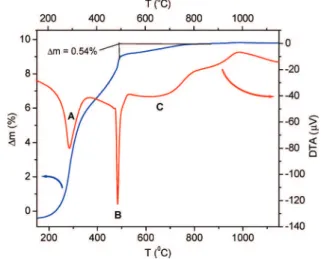In situ powder x-ray diffraction, synthesis, and magnetic properties of the defect zircon structure ScVO4−x
Texte intégral
Figure




Documents relatifs
While crystal structure requires knowledge of angles, distances, surfaces and volumes, directions and planes as well as other geometrical notions, the calculations are lengthy
In Table 3, models are presented of carbon nitrides based on the melon structure (the linear form of carbon nitride) and the fully condensed gCN (the network structure) as well
Irregular dashed lines outline the interlayer prisms (left) and octahedra defined by H 2 O interlayer coordinating the interlayer cations and O layer from adjacent layers
Crystal structure of Ni-sorbed synthetic vernadite: A powder X-ray diffraction study.. Sylvain Grangeon, Bruno Lanson, Martine Lanson,
Abstract. In connection with incommensurability: a) a 3c- superstructure phase has been found both in AHSe and in ADSe, b) a 2c-superstructure has been discovered in
For the smectic phases order parameters characterising the distribution of the molecules in the layers have been obtained under the assumption of Gaussian distributions
Since it is probably the properties of CaIrO 3 at high temperatures that will be of most interest to earth scientists, we obtained linear and volumetric thermal expansion values
Figure 10: Total structure factors obtained by (a) neutron diffraction, (b) x-ray diffraction and (c) structure factor of first difference determined by anomalous x-ray diffraction